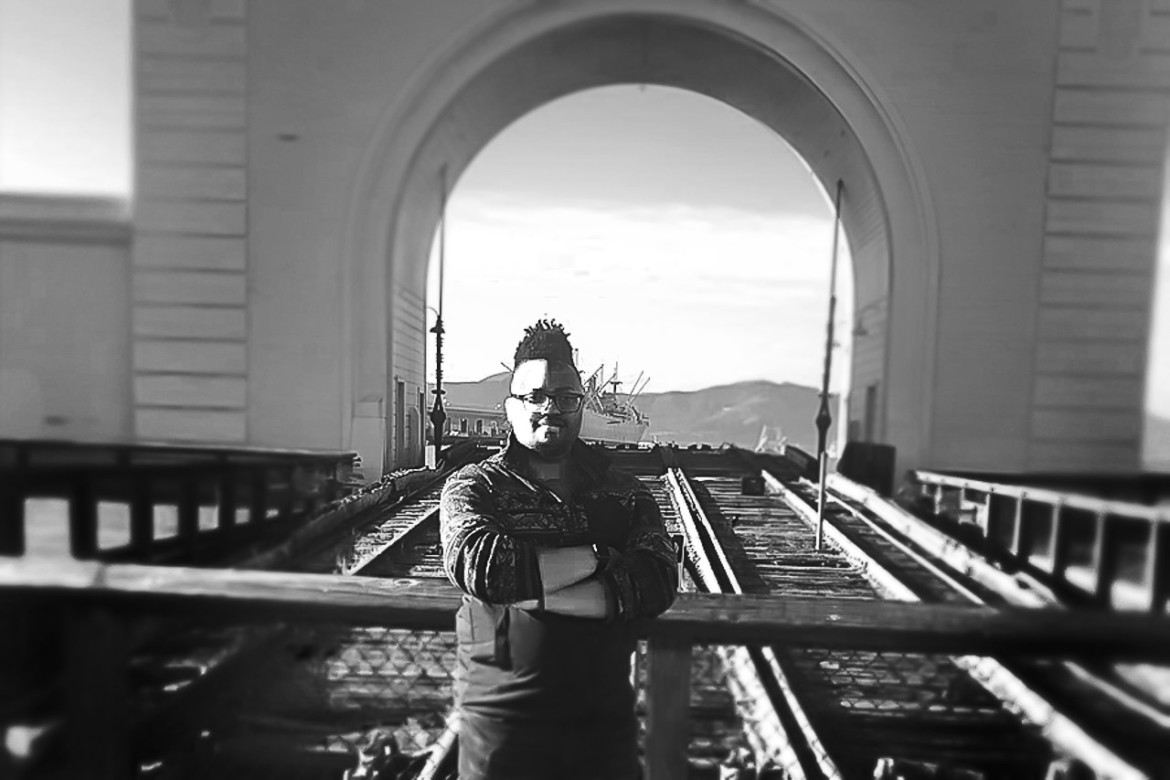By Nina Tabios
As an Avionics Guidance and Control Specialist for the United States Air Force, it was George Gray’s job to help airplanes fly. These weren’t just any aircrafts—for six years, Gray worked on C-5 military transport planes, some of the largest aircrafts flying out of the Travis Air Force Base. Though he grew quite adept at working on the flight control computers and autopilot systems, deep down, Gray always knew he wanted to work on cars.
“As a child, I guess I just didn’t understand it. There’s this thing with wheels, it was nice to look at and it was always something different,” Gray said. “I would always draw, try to innovate things on existing cars, and figure out ways to make them better in my head.”
Growing up, the current Academy of Art University School of Industrial Design student was fascinated by the cars that cruised around his predominantly Black neighborhood in St. Louis, Missouri. But despite his affinity for vehicles, Gray’s parents encouraged him to join the military since opportunities in the place he grew up were scarce. Looking back on that first day of basic training, Gray remembers feeling like it was the right choice for that moment in his life.
“They wanted the military to be a gateway for me to establish some sort of career,” he said. “I wasn’t happy where I was so at the time, it felt like it was the better place for me to be.”
He completed the first four years, then signed on for another two. By the time he finished his tour in May 2019, Gray was an E-3 Airman First Class and ready for his next chapter. He finally decided to use his veteran benefits and put his car obsession to use when he enrolled at the Academy.
Now that he’s studying automotive design, Gray has the opportunity to pursue his passion. “At this point in my life, I’m pretty much a human encyclopedia for cars,” he said. All those years of paying attention to trends in car design and manufacturing, who’s coming out with what features is coming in handy as he’s refining his drawing skills and learning how to develop forms and design digitally with CAD software.
Gray’s journey to the Academy is also bigger than cars. For him, it’s also a way to break down stereotypes of those in his community.
“Being an African American man, there are certain stereotypes against us,” Gray said. “There were times where I wasn’t given a chance because of my skin color. That’s why I appreciate this school giving me a chance regardless of who I was.”
Gray considers himself an independent person but as a member of the veteran community at the Academy, he’s found that the Veterans Resource Center (VRC) is a good place to gain knowledge on assistance programs available to himself as well as current and former servicemen and women. Student Services and VRC Coordinator Chrystal Beamon organizes informational events surrounding Veterans Affairs benefits and healthcare but also ensures the VRC is a community for them to feel welcomed and at home in the school.
“We have over 900 veteran students here at the Academy,” Beamon said. “They need that special recognition for the sacrifice they made for our country. My hat goes off to them as they further their education at the Academy and I feel privileged to be part of their journey.”
Currently, Gray is both working and going to school full-time. Before the pandemic sent him and the entire Academy home, Gray said he really enjoyed the small size of his classes. As a visual learner, he thrived being able to see firsthand how things were done and how easy it was to ask questions or get extra time with his instructors.
“My favorite part of this program is that it legitimately makes me happy. This is something I always wanted to do,” Gray said. “I always wanted to create something fresh. I want to have my own car brand one day with my own designs, made on my own rules.”
